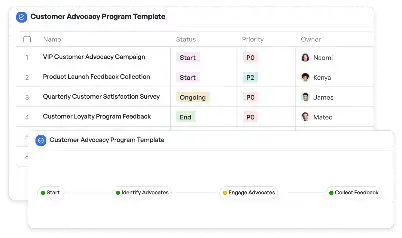Vector Database Configuration Guide
Achieve project success with the Vector Database Configuration Guide today!

What is Vector Database Configuration Guide?
A Vector Database Configuration Guide is a comprehensive resource designed to help teams set up and optimize vector databases for specific use cases. Vector databases are specialized systems that store and retrieve data in vector format, making them ideal for applications like machine learning, recommendation systems, and geospatial analysis. This guide provides step-by-step instructions on configuring schemas, indexing, and query optimization to ensure high performance and scalability. For instance, in a machine learning context, a vector database can store embeddings generated by neural networks, enabling efficient similarity searches. By following this guide, teams can avoid common pitfalls and ensure their vector database is tailored to their unique requirements.
Try this template now
Who is this Vector Database Configuration Guide Template for?
This guide is tailored for data engineers, machine learning practitioners, and software architects who work with vector-based data. Typical roles include AI researchers configuring databases for recommendation systems, geospatial analysts managing location-based data, and developers building real-time search engines. For example, a data engineer setting up a product recommendation system can use this guide to configure vector indexes for efficient similarity searches. Similarly, a geospatial analyst can leverage the guide to optimize queries for location-based services. The guide is also valuable for teams transitioning from traditional relational databases to vector databases, providing them with the necessary tools and knowledge to make the shift seamlessly.

Try this template now
Why use this Vector Database Configuration Guide?
The Vector Database Configuration Guide addresses specific challenges faced when working with vector databases. For instance, configuring schemas for high-dimensional data can be complex, and this guide simplifies the process with clear examples and best practices. Another common pain point is optimizing query performance for large datasets; the guide provides strategies for indexing and query optimization tailored to vector data. Additionally, it helps teams avoid compatibility issues with machine learning frameworks by offering integration tips. By using this guide, teams can ensure their vector database is not only functional but also optimized for their specific use case, whether it's powering a recommendation engine or enabling real-time geospatial queries.

Try this template now
Get Started with the Vector Database Configuration Guide
Follow these simple steps to get started with Meegle templates:
1. Click 'Get this Free Template Now' to sign up for Meegle.
2. After signing up, you will be redirected to the Vector Database Configuration Guide. Click 'Use this Template' to create a version of this template in your workspace.
3. Customize the workflow and fields of the template to suit your specific needs.
4. Start using the template and experience the full potential of Meegle!
Try this template now
Free forever for teams up to 20!
The world’s #1 visualized project management tool
Powered by the next gen visual workflow engine




